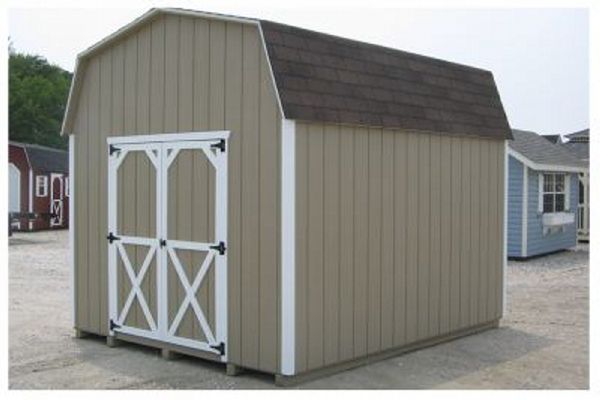10x12 Gambrel Garden Shed Plans - How to Choose the Best Shed Building Plans
Water is a wooden outhouse’s worst enemy and can rot and ruin your structure quickly. Excess moisture can also corrode hinges and (https://sheddrafts.com/10x12-gambrel-garden-shed-plans-blueprints) blister your shed’s paint. When the diy outbuilding building schematics allow for proper air circulation around the outbuilding you can prevent decay and growth of fungus. To prevent water from rotting your wood you should construct the mudsill no less than 6 inches over the ground. Fresh air will be able circulate underneath and prevent moisture from accumulating under your shed. Leave no less than two to three feet of empty area surrounding the outbuilding. A yard of empty area around the outhouse will allow wind to fully circulate around it. You can prevent a damp atmosphere where mildew loves to grow by making sure plenty of sun hits the outbuilding. It is much easier to paint or repair your new crafting with extra space around it. You may also install vents or fans to help assist with better air circulation.
One of the most important decisions about putting together a outbuilding is choosing where it should go. Do not construct a outhouse in a place that accumulates water as the moisture will ruin (read more) your outhouse. Most cities recommend that you follow their building guidelines with regards to your property line. Do not make the common mistake of designing a outhouse far away from where you need it. Having a shed that is out of the way may look nicer but it will be a lot less convenient when you need to use it. People will have the tendency to return tools to your outhouse when it is in an easily accessible area. When there is a difference in elevation you should be sure that the entrance outbuilding is on the side that is higher. The placement of the door on the elevated side will ensure the land slopes down towards the rear. When possible avoid placing your outhouse in areas that are covered by shrubbery. Exposure to direct sunlight and breezes will prolong the life of your building.
If you are planning on using your outhouse for various projects it is essential you have power. Your garden outhouse diagrams should include domestic electrical regulations (10x12 gambrel garden shed) as they are in place to protect you. To install electricity you must only use SWA cables. If you don’t want an ugly cable snaking its way along your outhouse you can run it underground. You must consider that sinking the wire below ground means you need to bury it to a depth of at least one meter. If you need some power but don’t want to mess with a lot of wires you can use solar panels instead. Direct light must reach the solar panel for most of the day in order to provide sufficient energy. Buy roof mounts for your solar panel to help you easily affix it to the outhouse’s roof. When running the cable from the solar panel be sure that it is not cruoutbuilding or bent. Consider buying wind turbines for an energy supply if you have a lot of wind.
Deterioration of your outbuilding’s floor is inevitable if it isn’t constructed correctly. Always include pressure-treated lumber in the garden outhouse building drawings when creating the floor frame of the outhouse. Untreated construction lumber may cost less but eventually it will rot and ruin your building. You will also need joists that go around the perimeter of the frame and mudsills. Mudsills sit directly atop your wood or concrete foundation and support the frame. In order to have proper support of the shed walls you will need to rest floor joists on the mudsill. For the shed’s floorboards you should use ¾-inch thick exterior grade plywood. Three-quarter inch plywood is essential as anything more thin will flex and bend. Plywood that is tongue and groove is a little more expensive but locks together and makes the floor stronger. Fasten down the plywood with 2-inch long galvanized decking screws.



